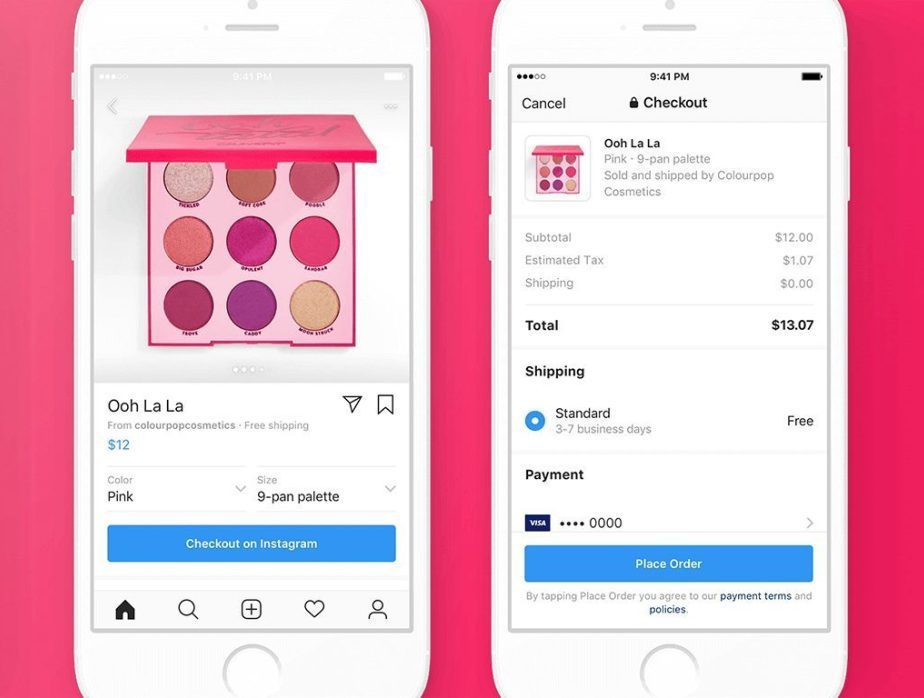While retailers have tried to solve the puzzle of “social commerce” for years now, it appears the missing piece has been staring them in the face all along: the social shopper is becoming increasingly mobile-exclusive. As of March 2019, there were 105.8 million “mobile only” social network users in the U.S., comprising 51.7% of all social network users, according to eMarketer. In fact, the overwhelming majority (70.5%) of social referrals to e-Commerce sites come from smartphones, according to data from Adobe Digital Insights.
Organizations are quickly becoming aware of the move to mobile-centricity: 57% are planning to deploy mobile-first content within their social strategy, according to Hootsuite.
Awareness of social’s strong ties to the mobile experience allow brands to use both more strategically. “I would just reiterate that social is really only a piece of the puzzle,” said Mike Froggatt, Director in Gartner’s Marketing practice in an interview with Retail TouchPoints. “A lot of the real genius brands are plugging it into their overall omnichannel experience, especially since social is becoming such an entirely mobile-driven experience at this point. They’re blending the location — social as both media and recreational activity on the part of the user — but also the opportunities to drive users down the path a little bit further.”
In this progressively mobile shopping environment, retailers need to be aware of several recent developments that will affect social commerce’s continuing growth, including:
- Instagram’s addition of checkout capabilities within its app;
- The need to attract shoppers most during the product research and discovery phases; and
- The growth of live chat and the need to improve on chatbot technology.
20+ Retailers Trial Instagram Checkout; Adidas CEO Praises The Feature
The biggest social commerce news of 2019 has certainly been mobile-driven, with Instagram introducing checkout capabilities, enabling 20+ retailers to sell products on the app beginning in March. The feature enables shoppers to use the Instagram app to view their order status, estimated delivery date and tracking number, as well as cancel orders, initiate a return or request additional support.
The functionality is designed to deliver on the “shoppability” aspect of social media that some consumers desire, cutting multiple steps involved in social shopping down to one. Prior to the Instagram launch, most major social networks couldn’t keep shoppers within their app as they shopped. That gives Instagram’s checkout option far more potential value than any other “buy button” predecessors.
“This move was inevitable,” said Steven Dennis, President of SageBerry Consulting in a RetailWire discussion. “All brands should be dissecting the customer journey and looking for ways to eliminate friction and/or ‘amplify the wow’ at key moments of truth. While many (if not most) customers will still prefer a more comprehensive shopping experience, I suspect many will appreciate the convenience of being able to buy within the Instagram app.”
Kasper Rorsted, CEO of Adidas, spoke very highly of the feature after the athleticwear company saw online sales jump 40% in Q1 2019, compared to 24% growth in the same period the previous year. Products such as the brand’s 4D Futurecraft shoes, for example, have sold particularly well on Instagram.
“There was no doubt that Instagram had a positive impact for our online business in Q1,” Rorsted told analysts on the brand’s earnings call on March 3. “The 40% was driven by a number of factors, but product launches and Instagram’s checkout tool were probably the two most relevant.”
Like many social commerce technologies, however, the Instagram checkout feature doesn’t yet give retailers a full range of benefits. For example, while Adidas gets the purchase data from Instagram conversions, Instagram keeps hold of all the important behavioral data leading up to the sale.
“Brands can get more robust analytics and user data when they direct users off the platform,” Froggatt said. “A key point that has been buried in the Instagram announcement was they’re essentially only going to be sharing basic information like name and email address with the brands, as opposed to all of the information that brands can get when a user goes to their site, i.e. cookies and location data. All that gets set aside when they’re using native commerce platforms within social.
“I still think brands are mainly focusing on pushing users to their own properties for the time being, until the commerce features across social platforms catch up with the market on the data and user information side,” Froggatt added.
Social Commerce Remains Most Valuable During Research, Discovery Phases
While shopping directly through a social network has been a function that consumers seem to want, only 11% say that a “buy” button has actually motivated them to make a purchase, according to a survey by GlobalWebIndex. Instead, shoppers are using the platforms to:
- Research products (42%);
- Discover brands via recommendations/comments on social media (24%);
- Make a purchase motivated by multiple “likes”/good comments on social media (21%); and
- Click on a sponsored post on Instagram (9%).
With that in mind, retailers may want to prioritize the consideration phase for their social media marketing initiatives. One e-Commerce marketplace, Poshmark, has leveraged its platform to do just that, leading shoppers to find and purchase new products.
While Poshmark considers social media one of its many marketing channels, the digital fashion marketplace has built a mobile app-driven community of five million sellers and 40 million users that operates just like a social network. It drives awareness to brands and products alike, while allowing shoppers to interact with each other as they buy products.
“People spend north of 23 to 27 minutes in the app per day, opening it seven to eight times,” said Steven Tristan Young, CMO of Poshmark in an interview with Retail TouchPoints. “I think that’s basically saying, ‘I’m used to doing this on many other social media platforms, now I’m going to do it on this platform where I’m also discovering I can buy other things I like.’ If you think about the power of connections with discovery — that has a lot of potential.”
The platform is designed to integrate shopping with social recommendations, creating a retail experience that enables users to ask other shoppers and sellers many questions that they can’t find answers to within a store or even in most places online.
“As a result, we see people turning to their social network for recommendations, asking questions like, ‘Is this product right for me?’, ‘Is it in style?’, ‘Is there somewhere I can get a better deal?’” said Young. “We often turn to our friends and family for their thoughts on goods and services — from a dentist recommendation to where to travel on our next vacation — because we trust our personal network’s taste and judgment. E-Commerce today is missing this peer-to-peer communication and high user engagement.”
Live Chat Or Chatbots? Why Not Both?
Poshmark is a strong example of creating a bridge between individual buyers and sellers, and one that retailers must take seriously if they want to keep mobile communication flowing with their own shoppers. Case in point: 72% of Millennials are more likely to be loyal to a brand that responds to feedback on social media over one that does not, according to Telus International. Additionally, 66% of Millennials say their loyalty toward a brand would be impacted by how quickly they address their feedback via social media.
“A lot of genius brands we see in our DigitalIQ Index have adopted messaging, whether it’s through the social platforms themselves, programs like WhatsApp or through bots,” Froggatt said. “These can function for both sales information and even customer service to close the loop post-sale. We think there’s an opportunity there, whether that’s through a bot or associate attention. There are vendors out there that do this from an AI- or human-assisted program that brands should either adopt in total or think about in the future.”
Use of live chat is high; nearly 66% percent of brands and retailers have adopted the technology on their web sites. Facebook Messenger has an even higher adoption rate, 85%, according to the Gartner L2 Customer Service 2019 Report. But despite Messenger’s high adoption rate, less than one-fifth of brands using Messenger have adopted chatbots on Facebook.
It appears the technology has delivered generally positive results for shoppers: 80% of people who have interacted with a chatbot say the experience was positive, according to Uberall. Yet 30% of shoppers still say they’re “somewhat uninterested” in using a chatbot, while 29% reveal no interest at all. Shoppers still have two major concerns with chatbot tech: 43% say chatbots need to work on their accuracy in understanding what customers are asking or looking for, and 27% say they need to improve on getting a human customer rep involved where needed.
“There’s definitely growing interest in branded chatbot experiences, but most consumers still need convincing,” said Florian Huebner, Co-CEO and Co-Founder of Uberall. “Many are wary, either because chatbot technology in the past was not advanced enough to ensure a good experience, or because consumers worry chatbots could easily become another spam channel. Brands have to do a better job creating AI experiences that customers find personalized, helpful and worthwhile.”













